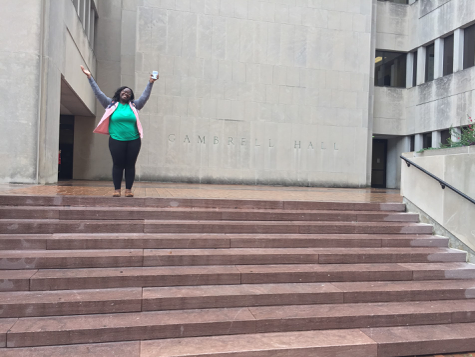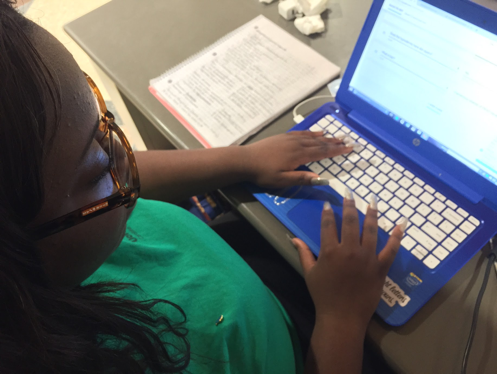
South Carolina schools need more teachers of color to influence students of color to go on to graduate high school and even go to college. The lack of diversity currently contributes to lesser achievement from students. As the problem grows, our job force shrinks and the gap in economic mobility increases.
By Karie Grace Duncan
Nov. 20, 2017
In schools across South Carolina, teachers don’t look like their students.
Around 35 percent of students in grades K-12 are African-American students, but only 14.9 percent of public school teachers in the state are black. Now state educators are taking notice — a new study shows that same-race teachers have a lasting positive effect on students.
The study co-authored by a Johns Hopkins University economist showed that having just one black teacher in elementary school encouraged low-income black students to graduate high school and show interest in college The working paper was published by the Institute of Labor Economics.
Low-income black students with a black teacher in third, fourth or fifth grade were 29 percent less likely to drop out and 18 percent more likely to show interest in college. For black male students the results were stronger – the study showed they were 39 percent less likely to drop out and 29 percent more likely to consider college.
Ashton Peterson, a black teacher at Darlington Middle School, said his students have often abandoned hopes of graduating from high school by the time they reach his sixth or eighth-grade classroom.
“I think it comes from a system where they have been beaten up by school instead of empowered to be successful by school,” Peterson said. Last year, when Peterson was still teaching 6th grade, he taught two young men that he identified with and could see strongly identified with him.
“They were the shortest two black boys in their whole class, and they wore nice, big glasses the same way that I do,” said Peterson.
The two boys would object if anyone even brought up the idea of going to college or graduating high school, until Peterson had the opportunity to meet with each of them one-on-one throughout the year and discuss the importance of access to higher education.
“They both were much more receptive to it and much more open to the idea of continuing on through school once they felt success in the classroom and they felt they had at least one teacher in the classroom that was in their corner,” said Peterson.
It’s important to keep students looking forward to graduation and higher education in order to sustain the eligible workforce in the state.
Forty-two percent of the jobs in South Carolina require a post-secondary degree or industry credential.
Melanie Barton, director of the South Carolina Education Oversight Committee, says that having a more diverse teaching force could help South Carolina economically in the long-run by raising graduation rates and the likelihood that students go to college.
“If we don’t have the folks for these jobs, we’re going to have to import them,” said Barton.
That importation of workers is already happening in some parts of South Carolina due to a lack of prepared high school graduates.
“In Charleston right now we have about 34 people a day moving to Charleston from other states to take the jobs there,” said Barton. “When that happens, you have certain South Carolinians who have jobs and others who don’t. It becomes a greater disparity in economics.”
Expectations make the difference
Taylor Outler, a second-year student at the University of South Carolina, credited influential black teachers in her Florence elementary school with instilling the drive to go to college. They made her believe in herself.
Although she attended a high poverty school, Outlier said her sixth grade math teacher, Dedra Wilson-Patrick, made sure she didn’t limit her dreams.
“She was the reason that I got into the Gifted and Talented program,” Outler said. “I didn’t think I would be good enough for it, so I never tried. She made me take the test, and I got in.”
“Ms. Patrick would call on students randomly to come up to the board, and she wouldn’t let you sit down until you believed in yourself enough to get it,” she recalled. “For me, it was just an issue of thinking I couldn’t do it. She said, ‘There’s no thinking, there’s just doing.’”
Debbie Hamm, the interim superintendent of the Sumter School District, said that it’s important for teachers in her district to know how to work with low-income students in order to encourage and empower them to believe in themselves.
“A kid who comes from a background where the family hasn’t been as successful may think that they don’t have a chance at being successful,” said Hamm, who retired from the Richland 2 School District last year after 40 years in education.

In the Sumter district, 87 percent of students are eligible for free or reduced lunch. Hamm found that the strategies given to her teachers from workshops at the Center of Excellence for Teaching Children of Poverty at Francis Marion University have a positive impact on classrooms in her district.
“Not only do we need to have high expectations, but to make kids feel empowered that they can do things. Doing goal setting is a strategy for helping those kids and praising them for improvement instead of just achievement,” said Hamm.
Working on a solution
For Peterson’s middle school students, setting consistent goals and standards is important to make them achieve at their highest level.
“I work to make sure that my goals for my students are no different than they would be anywhere else,” Peterson said. “If anything, my goals for some of my students are higher because they have more work to do to catch up to what grade level is.”
Peterson started teaching through the Teach for America program in South Carolina. The organization’s mission is to limit educational inequity by placing teachers in high poverty schools. All of the students at Peterson’s school receive free or reduced lunch.
“Because there is such a strong network of Teach for America teachers in every region along with the staff in every region, I think it gives a lot of the support you need because some days are hard,” Peterson said.
Teach for America is one of the programs that tries to tackle racial disparities in public schools. Another is the Call Me Mister program at Clemson University. The mission of this program is to provide a more diverse talent pool of teachers in South Carolina.
However, there are not yet programs or incentives from the state to support diversity in teaching according to EOC director Barton.
“We will actually make recommendations this year on how to improve the recruitment and retention of teachers and minority teachers will be a part of that,” Barton said.
The EOC is charged with looking at the functioning of the K-12 school system and making recommendations to the General Assembly and the governor.
“I think this has started a conversation that we needed to have for a long time,” said Barton.
